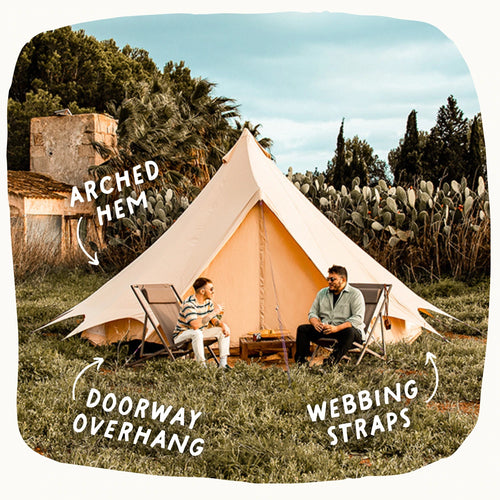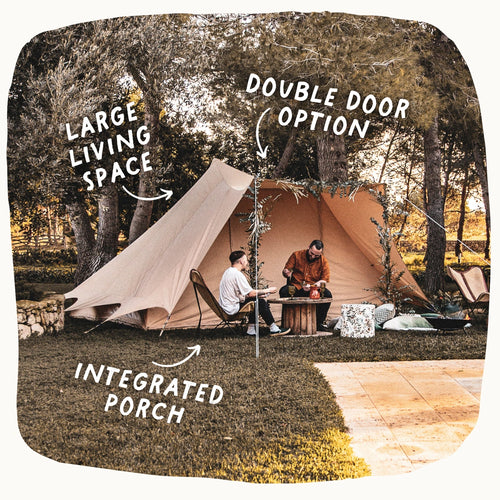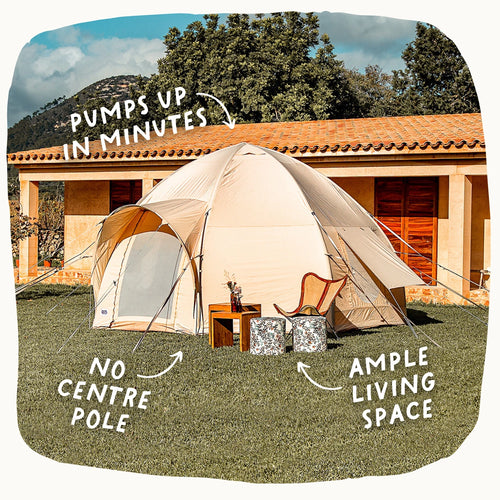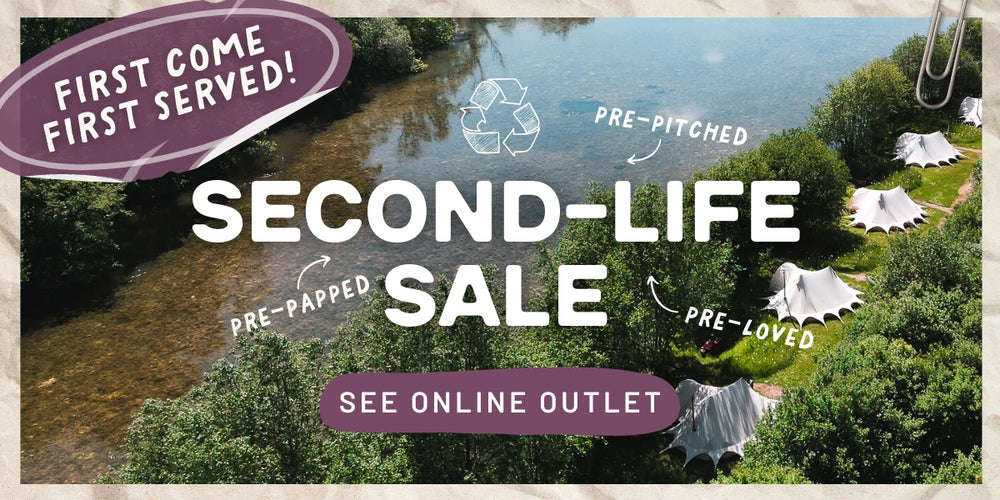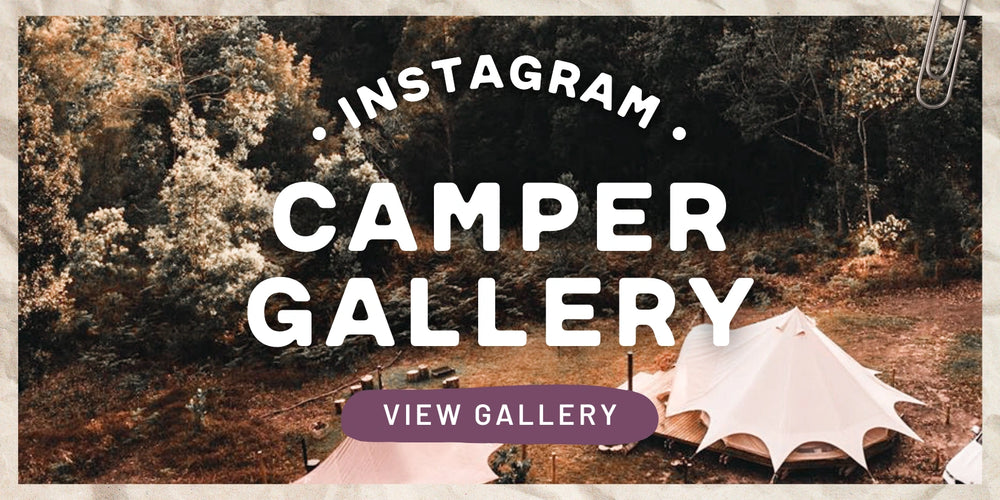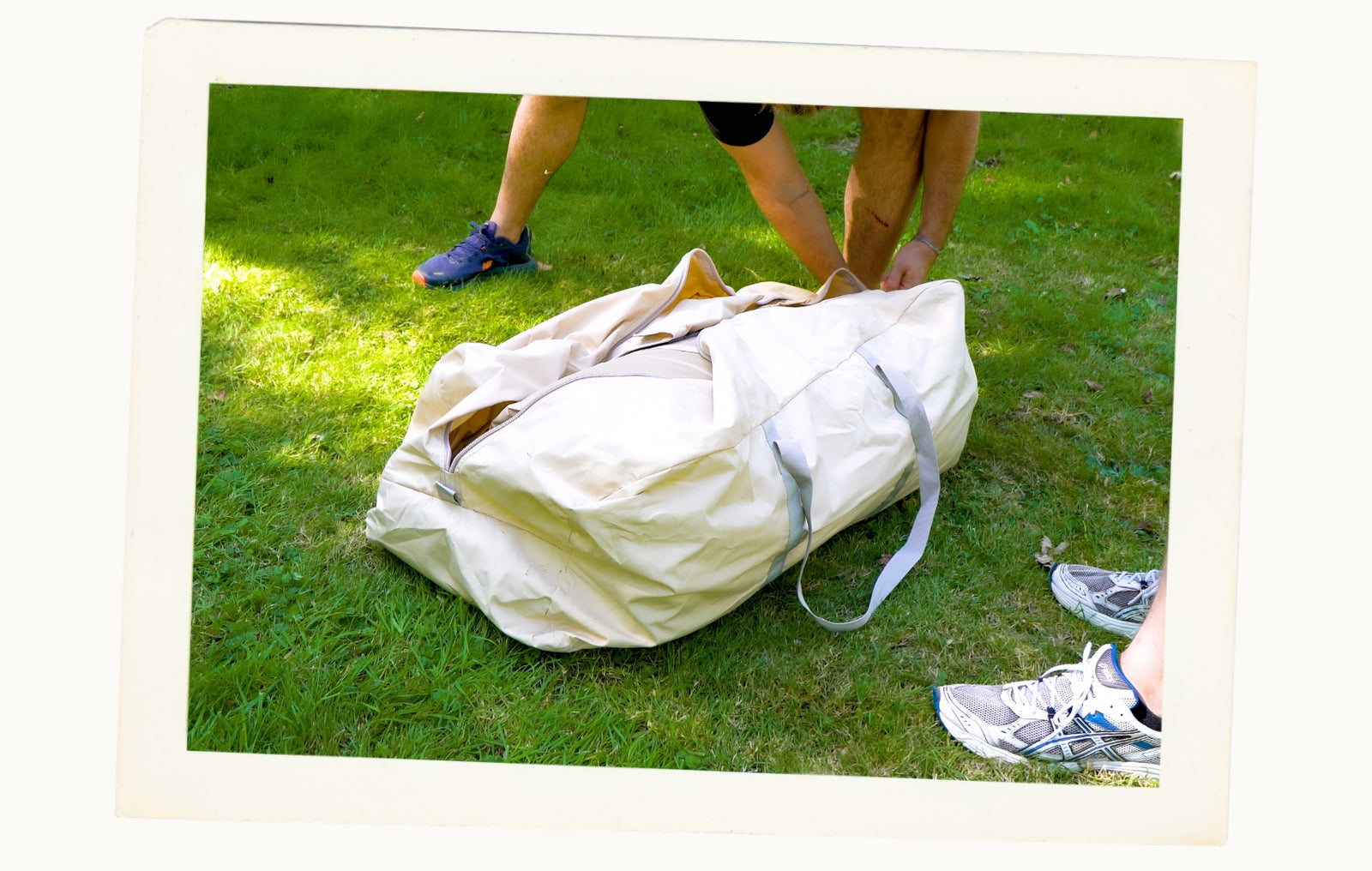Love the adventure but find yourself stressed and deflated at the end, asking yourself how to fold a tent or how to fit a tent back in its bag?
Folding a tent and returning it to its storage bag may seem like a straightforward task, but for those who haven't had much experience with camping gear, it can often prove to be a somewhat perplexing process. Yet, mastering this skill is essential for campers and outdoor enthusiasts alike, as it ensures the efficient use of space, helps maintain the tent's condition, and facilitates hassle-free setup during your next adventure. Let's delve into a detailed step-by-step guide on how to expertly fold a tent and stow it away neatly.

1. prepare your tent before packing away
Before beginning the folding process, it's crucial to ensure that the tent is clean and dry. Shake off any loose dirt or debris and, if the tent is damp, allow it to thoroughly air-dry. This precautionary step prevents mold and mildew growth, which in time can damage your tent.

2. removing the pegs & poles
Start by removing all the outer pegs from the ground. If the grounds are hard, you can use a 'twist and pull' method, use a peg extractor, or even another peg!

3. Removing the poles
Depending on which tent you have, removing the poles will vary. We recommend starting from the outside and working inwards. E.g. Star Bell Tent: Flexi pole > a-frame > centre pole.
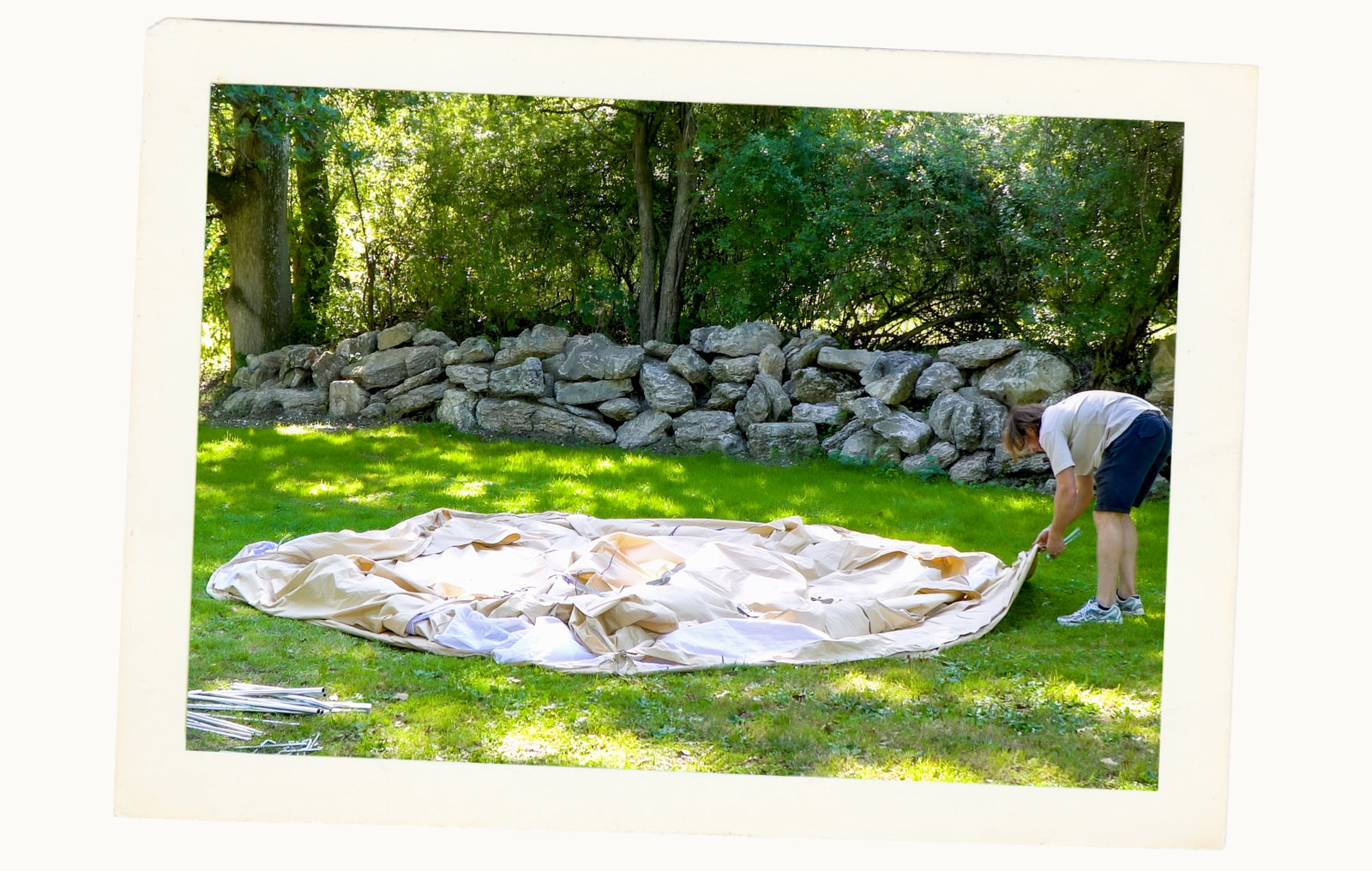
4. final checks before folding
Remove the rest of the pegs from the ground (standard smooth pegs). If the poles and pegs are dirty, give them a clean and towel dry. This may be easier once the mud has dried!
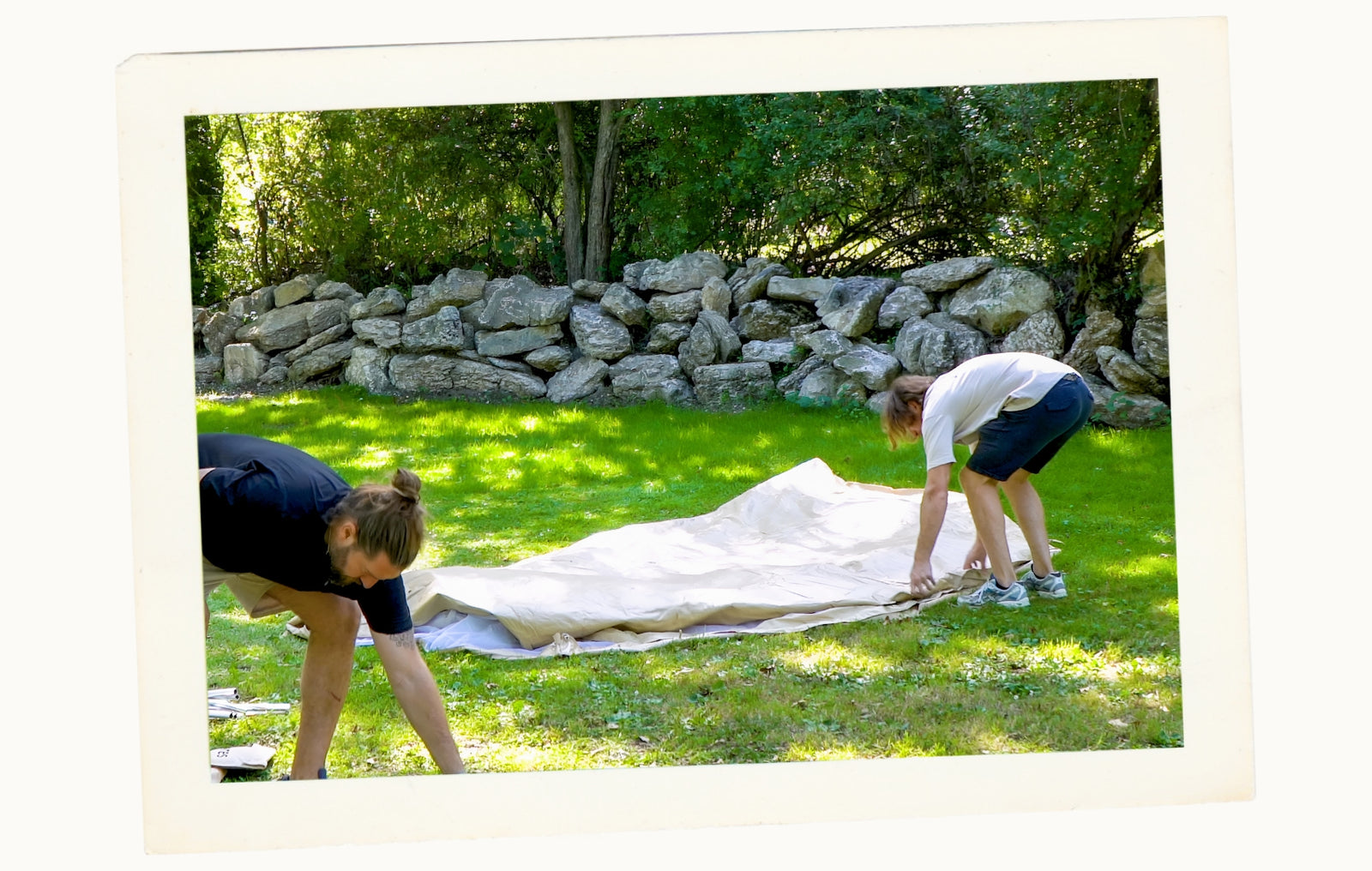
5. folding the tent
Without standing on the fabric, fold the tent in half, then back on itself. Ensure the ropes/webbing straps are dry before folding. Damp or wet ropes may result in dye transfer or mildew due to friction. Alternatively, you can temporarily detach the ropes.
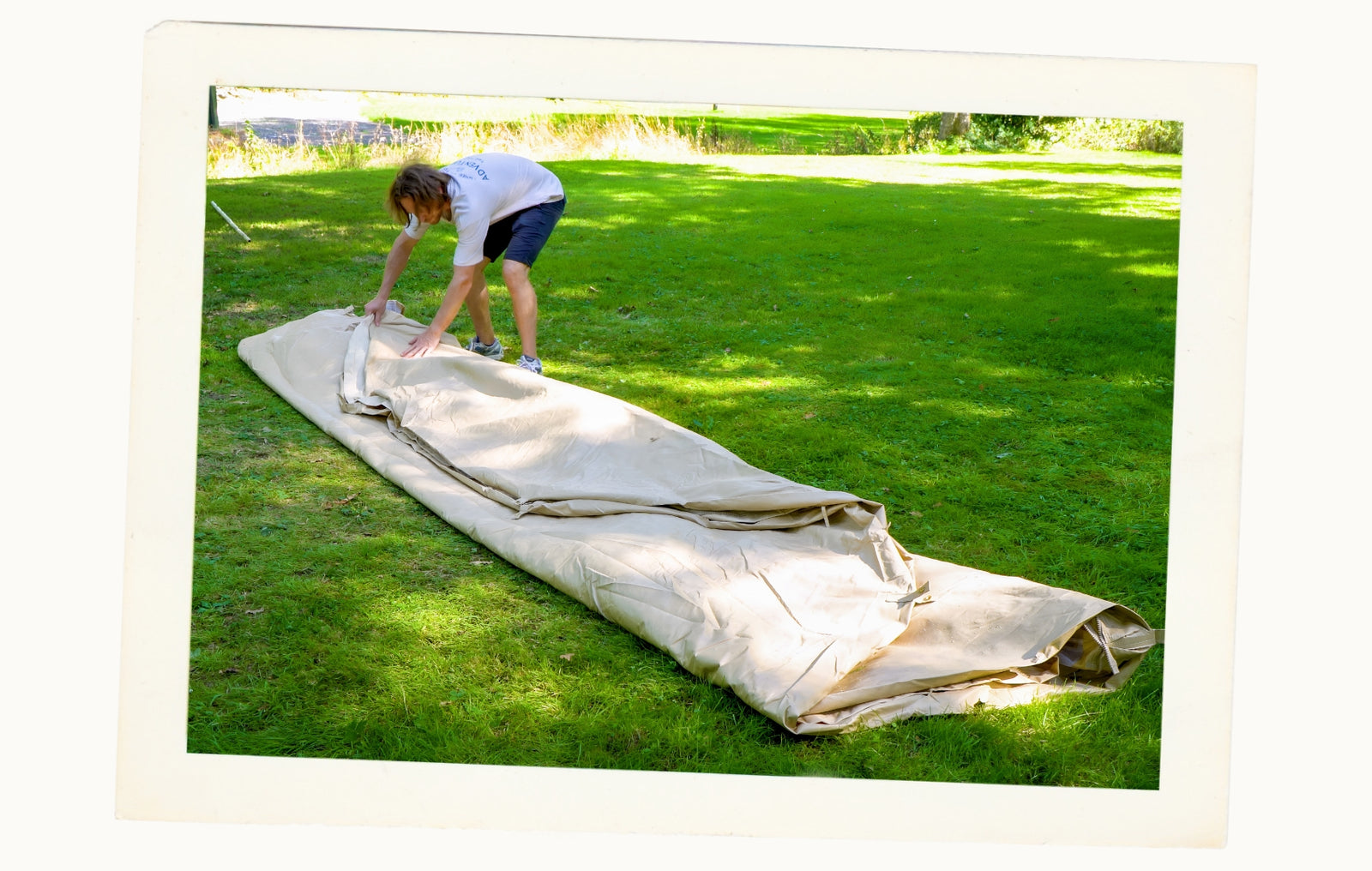
6. top tip!
To ensure the tent fits back in the bag, place the bag at the end of the tent to check if the width is small enough.

7. final folding stage
Now, fold the tent in half lengthways.
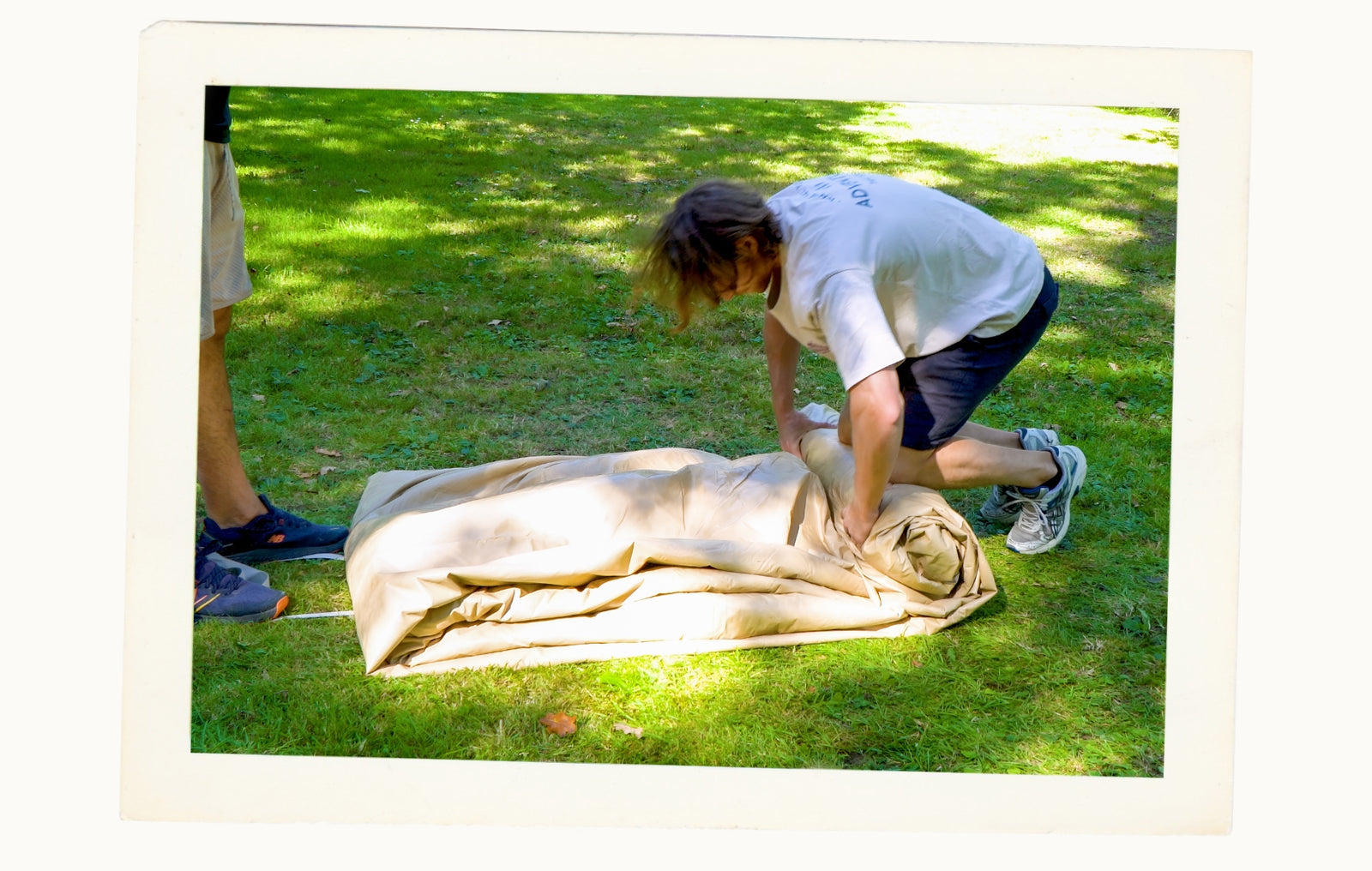
8. roll & release
Smoothing and releasing air as you go, begin to tightly roll the tent forwards. For a neather finish, we have started our roll from the open end. But, to release air more effectively, you can also roll from the opposing end.

9. Clip to keep compact
Once completed, use the straps provided to clip the rolled-up tent into place. If your next camping adventure could benefit from some extra storage space, why not give our 'XL Kit Bag' a go!
10. put the tent in the bag
If your next camping adventure could benefit from some extra bag storage space, why not give our 'XL Kit Bag' a go!
In summary, while folding and packing a tent may appear daunting initially, following these step-by-step instructions can turn it into a straightforward and efficient task. This skill not only ensures the longevity of your tent but also makes your outdoor adventures more enjoyable by streamlining the setup and takedown process.
FAQs
It is generally not recommended to put a tent away damp or wet. Storing a damp or wet tent can lead to several issues, including:
- Mold and Mildew: Moisture provides an ideal environment for the growth of mold and mildew, which can not only damage the tent fabric but also create health hazards.
- Odors: A wet or damp tent can develop unpleasant odors over time, making it less enjoyable to use on future trips.
- Degradation: Extended exposure to moisture can degrade the fabric, seams, and waterproof coatings of the tent, reducing its lifespan and performance.
- Stains and Mildew Spots: Storing a wet tent may lead to stains and mildew spots that can be challenging to remove.
- Foul Smells: Wet tents can develop foul smells, which may be difficult to eliminate.
To avoid these problems and ensure the longevity and performance of your tent, it's essential to properly dry it before storing it. Here's what you can do:
- Dry Thoroughly: After breaking down your camp, take the time to dry your tent completely. Shake off any loose dirt or debris and hang the tent out in the sun or a well-ventilated area to air dry. Make sure both the tent body and rainfly are dry.
- Check for Moisture: Ensure there is no moisture left in the tent or its components. Pay attention to seams, corners, and folds where water may have collected.
- Clean if Necessary: If your tent is dirty, consider cleaning it with a mild soap and water solution before drying it. Make sure it's completely dry before storing.
- Store in a Cool, Dry Place: Once your tent is thoroughly dry, store it in a cool, dry, and well-ventilated location. Avoid storing it in a damp basement or an airtight container, as these can promote moisture buildup.
- Use a Storage Bag or Sack: Use the Boutique Camping storage bag or sack provided with your tent, or consider using a breathable storage sack to allow air circulation while preventing dust and debris from accumulating.
By taking these steps, you can ensure your tent remains in good condition and ready for your next camping adventure. Proper care and storage will extend the life of your tent and help you avoid potential issues caused by moisture.
Whether it's better to stuff or fold a tent depends on personal preference and the type of tent you have. Both methods have their advantages and disadvantages:
1. Folding:
- Advantages:
- Disadvantages:
2. Stuffing:
- Advantages:
- Disadvantages:
In general, if you prioritize ease and speed when packing up your tent, stuffing is a convenient option. It's particularly useful when you're in a hurry or dealing with adverse weather conditions. However, if you want to minimize creases and wrinkles in your tent fabric, folding it neatly may be a better choice.
Ultimately, the choice between stuffing and folding comes down to your personal preference and the design of your tent's storage bag or sack. Whichever method you choose, remember to store your tent in a cool, dry place to maintain its condition and longevity.
For manufacturing defects and damage during transit, we offer our customers a ‘Swap it Service’ for deliveries within the UK; our courier will come to you with the new product and swap it at your doorstep for the old one. For returns from outside of the UK we will ask you to arrange the shipping of the goods back to us and we will credit you the shipping amount upon receiving a receipt showing the full amount. We will also request a tracking number for products returned so we are able to track the parcel.
We value our ongoing customer support and therefore will endeavour to solve any issues that you may have. If the warranty does not cover the damage, we can put you in touch with some third party recommended repair companies:
www.canvasrepaircentre.com
www.fixyourtent.co.uk
www.cleanyourtent.com
Spare parts can be purchased directly from our sales team who will be available at info@boutiquecamping.com or alternatively, you can call us at:
+44 (0)203 319 1315 Monday-Friday, 9-5:30 pm.W
Properly storing your tent after camping is essential to extend its lifespan and ensure it remains in good condition for future trips. Here are steps on how and where to store your tent:
- Clean and Dry: Before storing your tent, make sure it's clean and completely dry. Shake off any dirt or debris, and wipe down any damp or dirty areas with a damp cloth. Allow it to air dry thoroughly to prevent mold and mildew growth.
- Remove Stakes and Guy Lines: Take out all stakes, guy lines, and other accessories from the tent. Clean and dry them separately, and store them in their own bags or containers.
- Loosen Tent Poles: If your tent has collapsible poles, loosen the tension on them to avoid putting unnecessary stress on the elastic cords. Make sure they are clean and dry as well.
- Fold or Roll Neatly: Depending on the tent's design and your preference, you can either fold it neatly or roll it up. Folding may create fewer creases, while rolling may be quicker and easier. Be consistent with your chosen method to avoid excessive wear on specific areas.
- Store in a Cool, Dry Place: Find a cool, dry, and well-ventilated area to store your tent. Avoid direct sunlight, as prolonged exposure can damage the fabric and UV-sensitive coatings. Basements, closets, or dedicated storage bags or containers are suitable options.
- Use a Storage Bag or Sack: Many tents come with their own storage bags or sacks. If not, consider using a large, breathable storage sack or a cotton pillowcase to protect the tent from dust while allowing air circulation. Avoid storing it in airtight plastic bags, as condensation can form inside.
- Avoid Compression: Don't compress your tent excessively when storing it. Over time, prolonged compression can damage the tent's fabric and waterproof coatings. If possible, hang it or store it loosely to maintain its shape.
- Check Periodically: Periodically check on your stored tent to ensure it remains dry and in good condition. This is especially important if you're storing it for an extended period.
- Keep Away from Pests: To prevent pests like rodents from chewing on your tent, consider placing it in a sealed container or adding mothballs or cedar blocks to the storage area as a deterrent.
By following these steps and storing your tent in a cool, dry, and clean environment, you'll help prolong its life and ensure it's ready for your next camping adventure.
It's quite common for frequent campers to experience wear and tear on their tent bags due to the heavy weight loads and harsh environmental conditions. This can result in damage to or even the loss of the bag. Without a proper tent bag, transporting your tent becomes challenging, and there's a risk of leaving marks, causing fabric pulls, and exposing the tent to dirt and dampness.
Fortunately, we offer replacement tent bags in various sizes, ensuring that, regardless of your camping adventures, your tent remains well-protected. If you've struggled with folding and packing your tent back into its bag, consider opting for a larger size to provide extra space. You can find detailed specifications for each tent size in our tent size guides.

